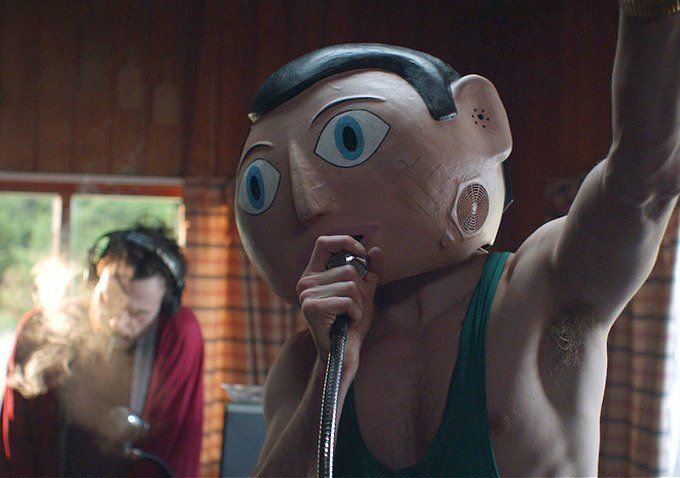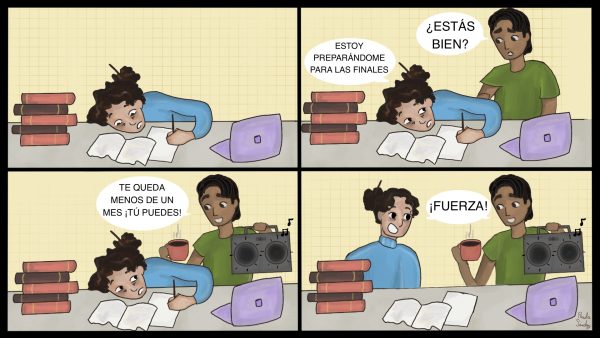‘Frank’ woos audiences with big heart, big head
September 8, 2014
While “Frank,” a new comedy about fame, music and social media by Irish director Lenny Abrahamson, is supremely quirky in the best indie tradition, its performances, humor and deep themes broaden its appeal, making it one of the most memorable films of the year.
The story is told from the perspective of a wannabe musician named Jon Burroughs (Domhnall Gleeson), and focuses on an indie-rock band called Soronprfbs. Through a strange set of circumstances, Jon finds himself joining the band led by eccentric lead singer Frank (Michael Fassbender).
Frank wears a large, doll-like mask on his head at all times, which he doesn’t remove even to eat or shower. The band’s manager, Don (Scoot McNairy), brings the group to a remote cabin in Ireland to record an album. In the course of several months, Jon records the misadventures of Frank and his hipster band members, including the uptight theremin player Clara (Maggie Gyllenhaal), through a series of YouTube videos he posts online.
Jon’s videos of the band’s rehearsals, quickly win the group a cult following, and an eventual trip to the South by Southwest music festival in Austin, Texas, where constant disputes threaten to tear the band apart.
Compelling character arcs and performances hold the film together. Fassbender, despite wearing a paper-mache head for the duration of the movie, shows a range of emotions through subtle movements and dialogue. When happy, he is vibrant and excitable; when sad, his head hangs and he gets sluggish. As the film progresses, it becomes easy to see him through his actions, like learning another language.
Gleeson is also a standout leading man. His character arc is a little more creative, transforming from a somewhat likable yet untalented musician to the band’s very own Yoko Ono, who creates strife, and angers his band mates.
“Frank” is a laugh-out-loud comedy of the highest quality. Many jokes are made at the expense of Frank’s head, but the best material comes from his unusual sense of humor. In one scene, Frank offers to simply tell Jon what his facial expressions are to avoid causing confusion. He states, “flattered grin, followed by bashful half-smile.”
Even Frank’s music is hilarious. Later, he decides to write a song that he thinks everyone will love. His performance of the short song on the miniature keyboard is overzealous, but it is only when he begins to sing that things take a turn.
The lyrics make no sense, as though Frank is spewing random words that come to his mind.
The film pokes fun at social media and the independent music industry. The band’s popularity is a product of its viral videos. When the group arrives at SXSW, a well-known music and arts festival, a fan explains to Frank that the band is not going to be as popular as he anticipated and that 25,000 YouTube hits is not very significant. Hearing this news devastates Frank but does not stop him from giving his all when he performs to an enthusiastic concert audience.
Late in the film, Frank goes missing and Jon uses his Twitter followers to track him down. Jon also posts on a blog about his experiences tracking him, which helps the band gain popularity.
The film also quietly examines mental illness. Early on, Don explains to Jon that he and Frank met in a psychiatric institution, attempting to explain the headgear. Some questions are answered in the stellar, albeit depressing finale. Repeat viewings of the film will provide deeper exploration into some of the more pivotal moments.
“Frank” is a peculiar adventure, but its strong central performance, odd humor and resonant themes make the film a thrilling experience for movie lovers.








